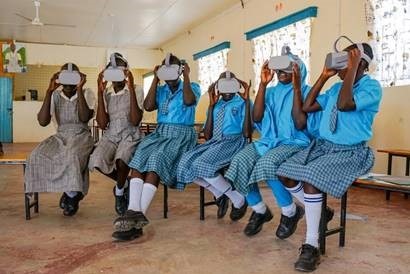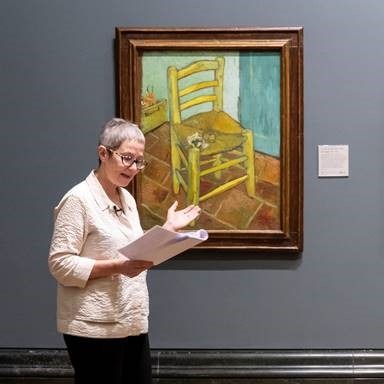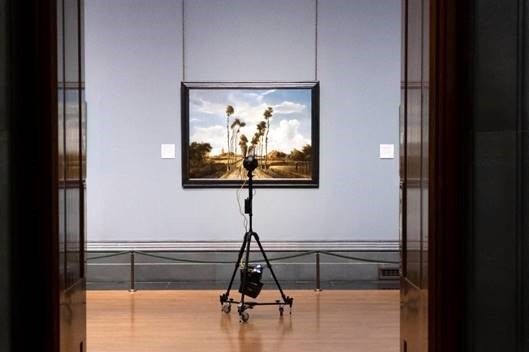
A group of young refugees growing up in a Kenyan refugee camp have been given a close-up look at a selection of paintings by world-famous artists during a 360-degree live virtual reality (VR) tour at the National Gallery in London.
The experience, captured in a new video released today for the International Day for Education, is believed to be the world’s first live VR school trip for refugee students.
Many of the students, aged between 13 and 22, have spent their entire lives in Kakuma Refugee Camp under the protection of the office of UNHCR, the UN Refugee Agency. The camp, one of the largest in the world, is home to more than 190,000 people who have fled conflict in neighbouring countries.
Nyagoa, 18, who was born in the camp after her mother fled the war in South Sudan, said: “It was really wow! I really enjoyed it. It felt like I was there with Lisa, together. It looked just the way that I always imagined and I really enjoyed it because it felt just like I was in London.”
Lisa Milroy – former Trustee to the National Gallery – has delivered a programme of practical art sessions, called Hands-On Art Workshops, for primary and secondary school students in Kakuma Refugee Camp since 2015. The workshops are conducted from London using digital video conference technology and tablet-based learning provided by Vodafone Foundation’s Instant Network Schools.

“It’s wonderful to be able to share an experience of the National Gallery and my thoughts about the paintings with the students in Kakuma through technology,” said artist Lisa Milroy. “The live virtual reality tour makes it possible for the students to get a feeling for what it’s like to wander through the galleries and enjoy the paintings as objects in space, to get a sense of their fabulous material form, and encounter them each with its particular setting.”
The tour featured a selection of nine paintings based on the subject of ‘time’, which has shaped several Hands-On Art Workshops. Lisa started the tour with a look at The Avenue at Middelharnis, 1689 by Meindert Hobbema and concluded with the recent wall painting Messengers, 2019, by the celebrated British artist Bridget Riley.

After the tour, the students had a live session with Milroy for a conversation about their impressions of the paintings. This was followed by a practical workshop where the students were invited to create their own paintings based on Van Gogh’s Chair, 1888 in the National Gallery.

“It’s a very emotional moment because, with the guidance of Lisa Milroy, one of the UK’s leading artists, we are bringing the beauty of these paintings in the Gallery to these students,” said Andrew Dunnett, Vodafone Group Director Sustainable Development Goals, Sustainable Business and the Vodafone Foundation.
“The Vodafone Foundation especially created the live VR tour for Kakuma Refugee Camp art students. This is what connected education is all about for Vodafone. Through our technology, we can provide connectivity to connect young refugees to the wider world and opportunities that exist beyond the camp.”
The National Gallery in London is committed to engaging people with art and using the latest technology to bring it to a wider audience.
Since 2016, students in Kakuma have been receiving a digital education through Vodafone Foundation’s Instant Network Schools (INS) programme in partnership with UNHCR. INS connects classrooms to the internet and provides tablets for the students, a laptop for the teacher, high quality and localised digital educational content and teacher training, along with access to a wealth of curated online content and resources. To date, the programme has benefitted more than 86,500 students and over 1,000 teachers across 36 INS schools and eight refugee camps in Sub-Saharan Africa.
Vodafone Foundation and UNHCR have committed to expanding the INS programme to benefit more than 500,000 young refugee students.
How Vodafone Foundation created the first live-streamed VR school trip for Kakuma refugee students
The live VR experience was possible thanks to Vodafone’s connectivity, a 5G Gigacube, the latest hardware and global 360 video distribution the live VR experience was possible. The film crew moved and streamed in 360 at the same time.
Picture/video credit: Vodafone Foundation, by kind permission of the National Gallery


